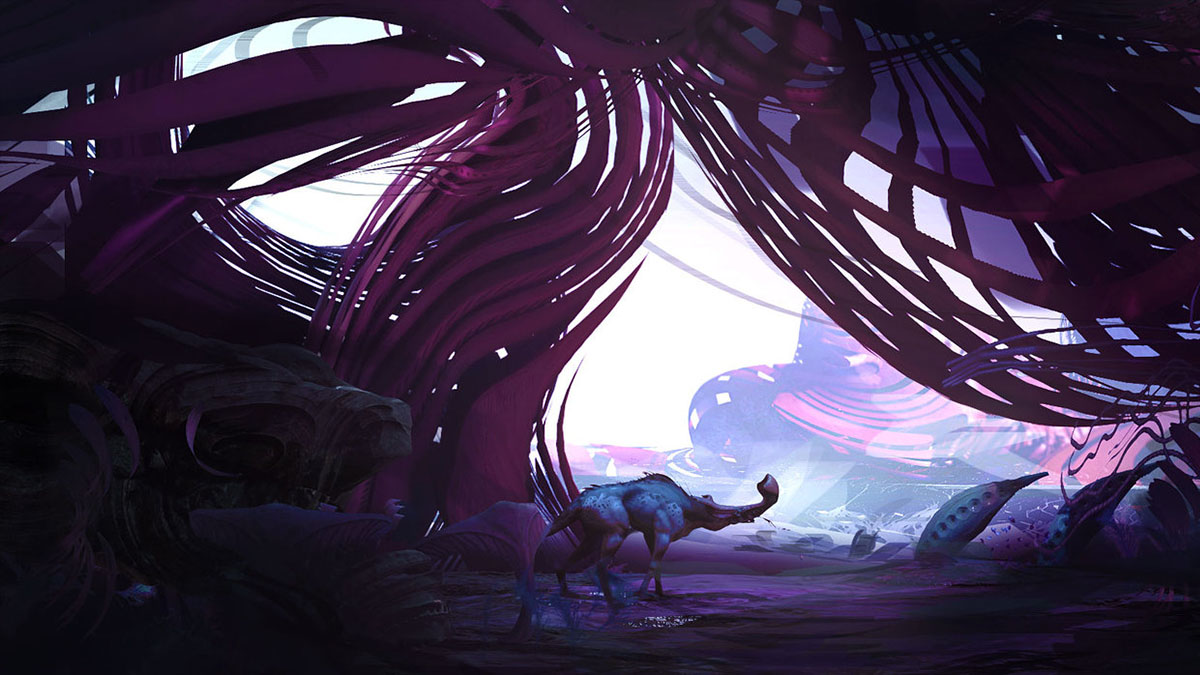how to find an alien forest

Chirality seems to be a hot topic in astrobiology this month. Just a few weeks ago, astrobiologists at NASA announced that they found a possible explanation as to why the amino acids present in all life forms we know today wind to the left. Now, another team of scientists is taking what we know about chirality to a whole new level and thinking of using telescopes to hunt for vast bacterial colonies and forests on alien worlds. In their experiments, photosynthetic organisms like cyanobacteria and plants polarize the light they reflect to produce a signature of the handedness of their molecules. This means that a telescope able to image a planet in another solar system could detect a strong biomarker and let us know that the world we’re seeing is not only habitable, but inhabited.
Now for the technical part. While the molecular structure of amino acids in all living things on Earth is wound to the left due to the potential influence from meteors that fell to our young planet as it was forming, not every molecule in our bodies has a left-handed chirality. Some compounds in our DNA are actually right-handed. So what good would it do to look for polarized light from an alien forest which would probably have both right- and left-handed molecules present in its basic makeup? According to the team, light reflected by photosynthetic organisms has a bias towards a particular chirality in stark contrast to various minerals used as controls in their experiment. Minerals have a fairly random distribution of chiralities and don’t polarize light as definitively as living things. Even water rich meteorites, which can have up to 18% more left-handed molecules, wouldn’t be as homochiral.
This homochirality is what an “astrobotanist” would try to find in the spectrum of light from an extrasolar world. Having a clear bias towards a particular handedness should be a sign of heredity and heredity is a sign of living things. With a strong bias to the right or the left coming off the planet’s flora or enormous colonies of microscopic fauna, we could safely theorize that we’ve found an alien biosphere. And since we’d be doing this light years away, we wouldn’t have to fret about cross-contamination tainting our data.
The idea of looking for photosynthetic aliens has been around for a while and was discussed in a Scientific American cover story which goes into another intriguing detail; the possible colors of plants on other worlds. On planets orbiting a very bright star, they could be blue to reflect most of the light they get. If they didn’t, they’d absorb too much energy and fry themselves to a crisp. Around small, dim stars, the picture could be very different with black plants trying absorb any light they can. Finally, around young flare stars, plants might need to be aquatic which would pose a big problem for telescopes. Water would alter whatever light is being reflected by the extraterrestrial flora and potentially interfere with spectrometry readings. Of course this is all based on our understanding of photosynthesis and that understanding is limited to one planet. There’s really no telling what a forest on a faraway planet would look like.
Originally, trying to give potential colors to alien plants was suggested as a quick and dirty way for an astronomer to figure out whether there might be something interesting on the planet’s surface when we can build telescopes powerful and agile enough to take snapshots of exoplanets. But the idea of looking for a chemical signature of heredity would skip the problems associated with guessing what photosynthetic alien biospheres would look like on a planetary scale and could make it easier to detect a more persuasive indicator for life than unidentifiable colored patches measuring less than a fraction of a fraction of a pixel at best.
See: Sparks, W., et al., (2009). Circular polarization in scattered light as a possible biomarker Journal of Quantitative Spectroscopy and Radiative Transfer DOI: 10.1016/j.jqsrt.2009.02.028





